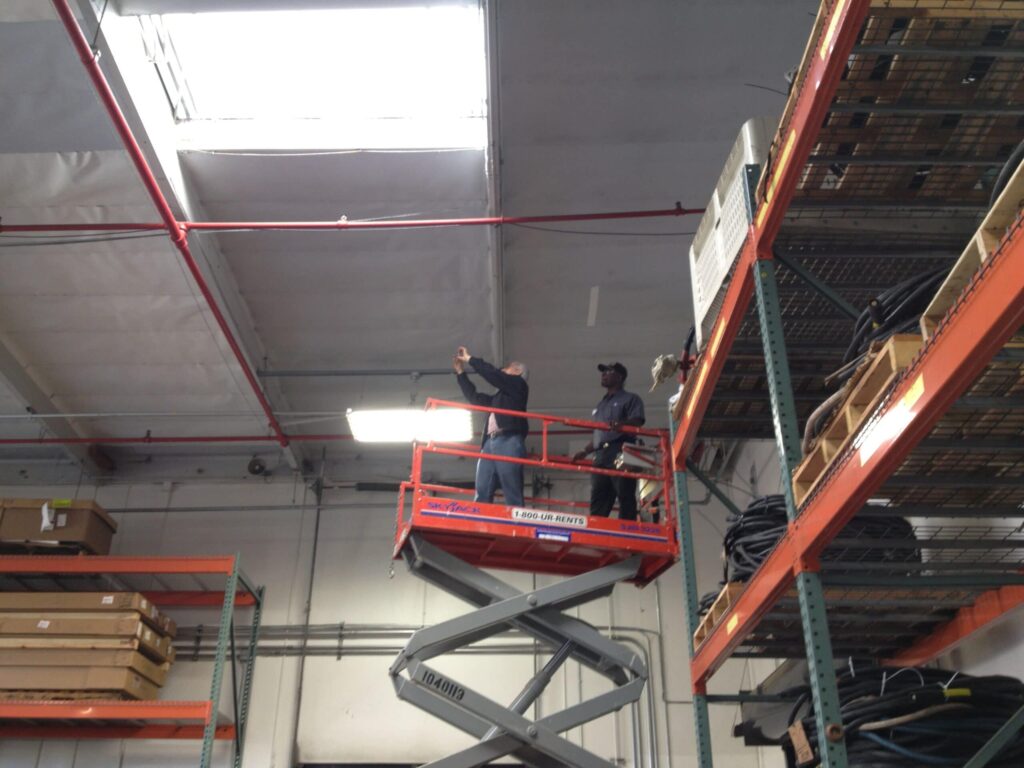By Marc Burrell, Project Engineer, NGVi
Welcome back to our five part series where we explain what you need to understand about upgrading your vehicle maintenance and repair facility for natural gas-powered vehicles. The purpose of this series is to touch on each of the major systems within a vehicle maintenance and repair facility and explore how they relate to the multiple codes the building must comply with after being modified. Since each facility is unique, it is important to seek an evaluation by a knowledgeable and experienced professional who is familiar with the codes and industry best practices to ensure recommendations are custom tailored to your facility.
In Parts 1 and 2 we discussed the building envelope and the heating system, respectively, and some of the challenges that a company may face when applying the codes to these parts of the facility. If you missed these articles, please feel free to view them here. In this portion of the series we will explore the lighting and electrical system.
The primary concern with a facility’s lighting and electrical systems is that they can be a source of ignition. In the unlikely event of a natural gas leak within a facility, we want to avoid having the lighting or electrical systems become the ignition source for a combustible mixture of natural gas.
To understand how the codes safeguard against lighting and electrical system hazards, let’s consider a facility designed to repair and maintain gasoline- and diesel-powered vehicles. Sources of ignition are not allowed to be located within 18 inches of the floor in these types of buildings because in the event of a gasoline or diesel spill, the heavier-than-air fuel will pool and spread on the floor.
Natural gas is a lighter-than-air fuel, and in the unlikely event of a leak, it will rise to the ceiling of your facility. In the case of LNG, it can be both heavier and lighter than air. In the event of a leak, it will pool and spread for a brief period of time before it vaporizes to a gas and rises.
When developing the codes for major repair garages that maintain and repair natural gas-powered vehicles, the area within 18 inches of the ceiling is designated a Class I Division 2 Group D classified location. Essentially, the code officials took the rule they created for facilities doing the same work on heavier-than-air vehicles and flipped it to apply to the ceilings of facilities working on natural gas-powered vehicles. Now, facilities that are designed to maintain and repair gasoline, diesel, and natural gas vehicles have two classified areas: 18 inches from the floor and 18 inches from the ceiling.
These classified areas apply to all electrical components, including but not limited to convenience outlets, junction boxes, conduits, wires, and lighting fixtures. All of this electrical equipment can be dealt with in one of two ways. The first way is replacing it with Class I Division 2 Group D explosion proof components, and the second way is to relocate the equipment outside of the classified area.
Replacing the existing equipment with Class I Division 2 Group D compliant equipment can only be discussed in a limited capacity without seeing the facility and should really be dealt with on a case by case basis.
Relocating your existing equipment requires that you find a new space to put the electrical system. It is possible to mount these components on the structural members of your facility, such as trusses, joists or beams, if the mounting surface is outside of the classified area. Otherwise it might be necessary to install a new area to put the electrical system below the classified area, such as pendant mounted metal struts.
Both methods can be costly to complete, but often it is more economical to relocate the existing equipment than to purchase replacement equipment. However, every facility is unique and this should be decided by a qualified professional who can view your facility firsthand.
It is worth noting that there is a way to declassify the classified area 18 inches from the ceiling. If the ventilation system is interlocked to the lighting system, the classified area 18 inches below the ceiling becomes declassified and the existing lighting and electrical equipment could remain where it is without being replaced. This can be a viable option if the facility operates 20-24 hours per day. However, this option will significantly increase electric consumption.
This wraps up the basics about what you need to know about lighting and electrical system requirements in natural gas-powered vehicle maintenance and repair facilities. Be sure to look out for the next edition of our series where we will discuss the ventilation system and methane detection.

